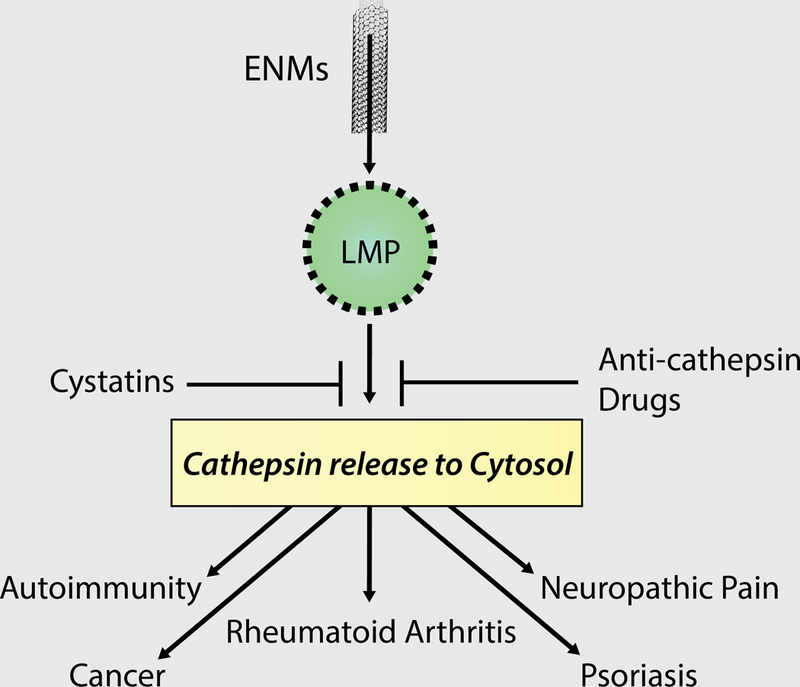Figure 2.

Many of the intra-lysosomal cathepsins have been directly associated with a variety of inflammation-related diseases (Table 1), and an emerging group of therapeutics/inhibitors have been developed for the study or treatment of cathepsin-related disorders. It is possible, therefore, that anti-cathepsin agents can be designed for the treatment of diseases associated with ENM exposure, since the mechanism of lysosomal membrane permeabilization is similar to other endogenous inflammatory agents (cholesterol crystals, amyloid plaques, uric acid crystals, etc.).
